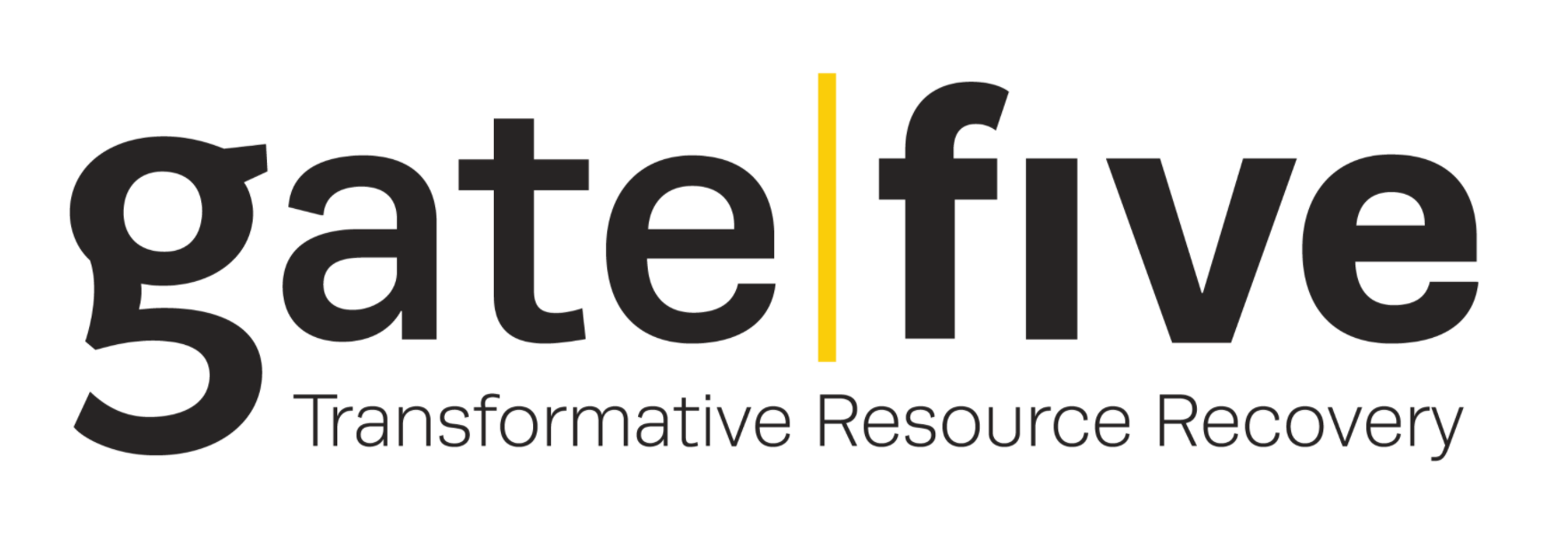This week, I talked with Steve Delson and Charlie Rainey, the CEO and Director of Corporate Communications (respectively) of Gate 5 to discuss their company’s solution to better protect public health and the environment by transforming organic waste into safe and usable products.
Gate 5 was founded in 2011, and the Gate 5 System has recently been recognized by the U.S. Department of Energy as a superior method for processing wastewater solids (sewage sludge) and other organic waste.
Can you describe what your company does, the impact, and how it differs from other competitors in the space?
The Gate 5 System is a thermal process that will change the way many organic wastes, such as sewage sludge, animal manure, and food waste, are managed by turning these residuals into 100% safe and usable products.
The current problems with managing these residuals are significant. Gate 5 has developed an innovative, highly scalable, less costly, and simpler-to-operate process that offers better protection for public health and our environment.
Throughout the world, millions of tons of sewage sludge, animal manure, and food waste decompose each day into methane gas and can carry a wide range of contaminants of concern, such as viruses, trace pharmaceuticals, metals and PFAS containing compounds that are harmful to the health of people, animals and the environment. These residuals also contain as much latent energy as coal. Recognizing the problems, regulators are beginning to phase out organic waste placement in landfills.
The Gate 5 System dries and mills feedstock (sewage sludge, animal manure, and food waste) into a powdered biofuel. The powder is then burned at 2000O F. The energy and heat from the burner are used to dry the feedstock and power a turbine to produce renewable electricity to run the Gate 5 System. Surplus renewable electricity from systems processing more than one dry ton of feedstock per day can be used to help power the wastewater treatment plant or sold to the grid. In addition to producing renewable energy, our process produces clean air and water. What is left over at the end is a small amount of clean ash that can be sold to asphalt and cement companies, as a fly-ash alternative.
The Gate 5 System recovers far more than the +/- 50% of the latent energy in the residuals than today’s widely used conventional activated sludge (CAS) systems, and the high combustion temperature of the Gate 5 System assures destruction of the contaminants of concern, so they cannot pollute the environment, land, ground water and air.
Because a Gate 5 System at a wastewater treatment plant can run on either “fresh sludge” or biosolids, adopting a Gate 5 System can reduce its environmental footprint and improve its economics by eliminating biosolids production and hauling altogether.
What is the current ecosystem/market landscape and who are the main players? How does the ecosystem/partners/customer seek to benefit from your technology?
Main customers for Gate 5’s technology are managers and producers of organic waste, including wastewater treatment agencies, food processing plants and agricultural operations such as dairies, poultry and swine operations. All three of these industries are facing regulations to reduce waste and their environmental footprint.
Today’s methods are not capable of delivering the needed results and have significant leftover byproducts that must be hauled away for disposal in landfills or landspread. In the current system, biosolids decompose and release methane and other greenhouse gases into the atmosphere, while nitrate and phosphorus containing compounds contaminate the groundwater table and waterways. The current systems do not remove many of the contaminants of concern from the byproducts.
The ecosystem and public will benefit because the Gate 5 System will run on power created from the System’s feedstock (no fossil fuel needed) and turn sludge, biosolids and other organic feedstock into 100% usable products.
How are you thinking about the market and policy?
We feel that it is possible for something that makes good business sense to also be good for public health and the environment – Gate 5 does both. Specifically, we must stop fowling our planet by burying material that will decompose into greenhouse gas and contain contaminants of concern. What has been considered waste can be recognized as valuable resource that should be recovered to reduce our dependency on fossil fuel. The Gate 5 System addresses both issues in an environmentally positive manner. Gate 5 is an example of companies developing technologies that will protect public health and the environment.
What are the current trends in the sector? What does the future look like?
The wastewater management, food processing and agri-business industries are recognizing the need to shift from waste disposal to resource recovery to better protect public health and the environment. During the next 3 to 5 years organic solids will be banned from landfills and industries will be challenged to find new solutions that reduce their environmental footprint.
Gate 5 is well-positioned to be a process of choice for these industries because our process is, more effective, highly scalable, less costly, and simpler-to-operate than current industry practices for managing their residuals. Gate 5 System has project high growth in the waste management and food industries. Gate 5 is seeking equity partners to invest in clean energy.
Our Outlook
Meanwhile the circular economy has been focused on plastic recycling and reuse, as well as greener materials, we will inevitably need waste management solutions. There will always be some form of food waste, as well as general organic waste. Rather than wasting excess, Gate 5 turns it into safe and usable products – a true circular economy.
About The Author

Daniel currently works at Lawrence Livermore National Laboratory. His original assignment was to maintain and update facility safety documentation for all facilities on-site, and perform risk analysis. Over time, his role has expanded to leading continuous improvement efforts through product management.
Concurrently, Daniel volunteers with Techstars, helping organize startup weekends, and with the American Institute of Chemical Engineers, organizing events on the local and national levels of the organization. He also volunteers with One World, and previously with Powerhouse Ventures, to source and screen startups for potential investment.
Daniel holds a BS in Chemical Engineering from UC Davis, and recently completed coursework in energy innovation from Stanford. His passion is at the intersection of sustainability, innovation, and business.

